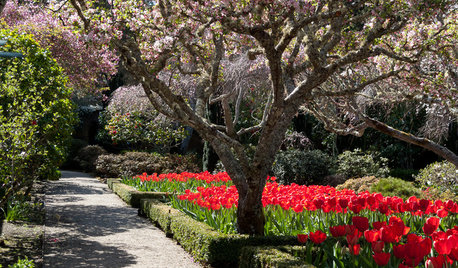Tulip Tree Transplant
karij_luvplants
16 years ago
Featured Answer
Sort by:Oldest
Comments (12)
quirkyquercus
16 years agojean001
16 years agoRelated Professionals
Ashburn Landscape Architects & Landscape Designers · Birmingham Landscape Architects & Landscape Designers · Panama City Landscape Architects & Landscape Designers · Waterbury Landscape Contractors · Canton Landscape Contractors · Deer Park Landscape Contractors · New Cassel Landscape Contractors · Paramus Landscape Contractors · Placerville Landscape Contractors · Riverhead Landscape Contractors · Tamarac Landscape Contractors · Four Corners Landscape Contractors · Yakima Siding & Exteriors · Oak Ridge Decks, Patios & Outdoor Enclosures · Centerville Stone, Pavers & Concretetreeguy123
16 years agokarij_luvplants
16 years agoquirkyquercus
16 years agojean001
16 years agobdude4
16 years agospruceman
16 years agokarij_luvplants
16 years agoquirkyquercus
16 years agokarij_luvplants
16 years ago
Related Stories

PLANTING IDEASEasygoing Tulip Ideas From a Grand California Garden
Gather up these ways to use tulips to make a spring garden of any size overflow with beauty
Full Story
PLANTING IDEASStretch the Budget, Seasons and Style: Add Conifers to Your Containers
Small, low-maintenance conifers are a boon for mixed containers — and you can transplant them to your garden when they’ve outgrown the pot
Full Story
FALL GARDENING11 Trees for Brilliant Fall Color
Give your landscape the quintessential look of autumn with the red, orange and yellow leaves of these standouts
Full Story
LANDSCAPE DESIGNThe Unparalleled Power of Trees
Discover the beauty and magic of trees, and why a landscape without them just isn't the same
Full Story
HOUZZ TVHouzz TV: A Most Unusual Indoor-Outdoor Connection
A giant California Sycamore grows through this dream house in the hills of Los Angeles
Full Story
SPRING GARDENING7 Spectacular and Practical Spring-Flowering Trees
Put on a beauteous show in the garden with a landscape tree awash in flowers — just do your homework first
Full Story
CHRISTMASReal vs. Fake: How to Choose the Right Christmas Tree
Pitting flexibility and ease against cost and the environment can leave anyone flummoxed. This Christmas tree breakdown can help
Full Story
FALL GARDENING6 Trees You'll Fall For
Don’t put down that spade! Autumn is the perfect time for planting these trees
Full Story
LANDSCAPE DESIGNFlood-Tolerant Native Trees for Soggy Soil
Swampy sites, floodplains, even standing water ... if you've got a soggy landscape, these trees are for you
Full Story
TREESHow to Buy Healthy Trees and Shrubs
A healthy young plant with a strong form is more likely to do well in your yard. Here’s what to look for at the nursery
Full StoryMore Discussions







spruceman